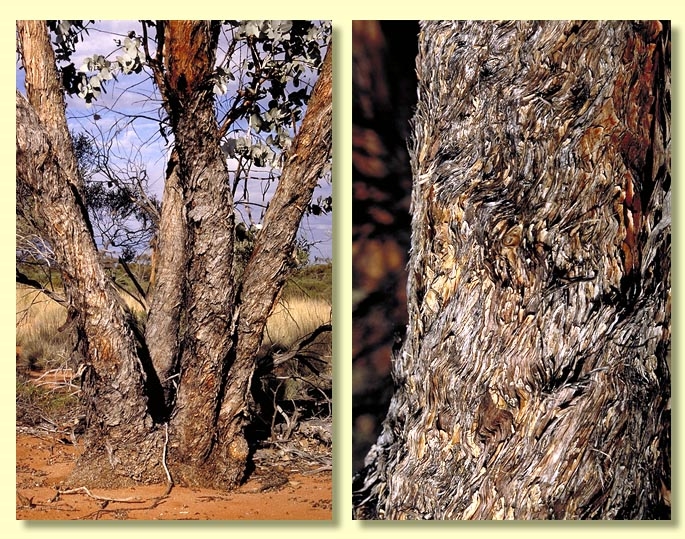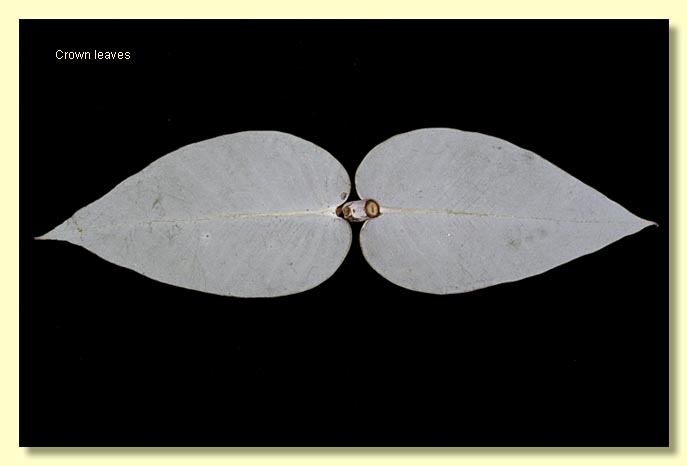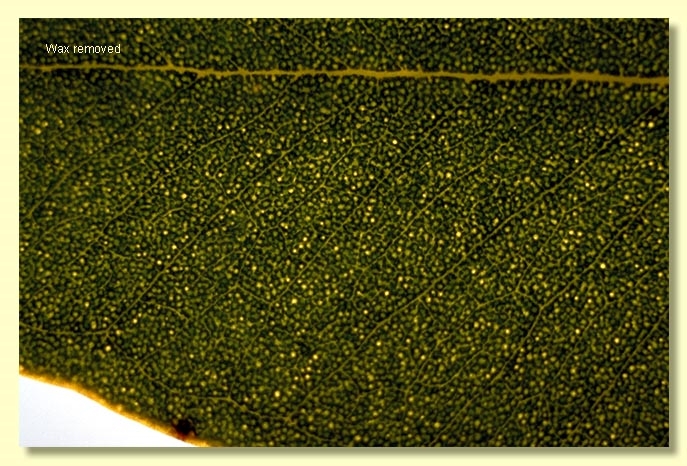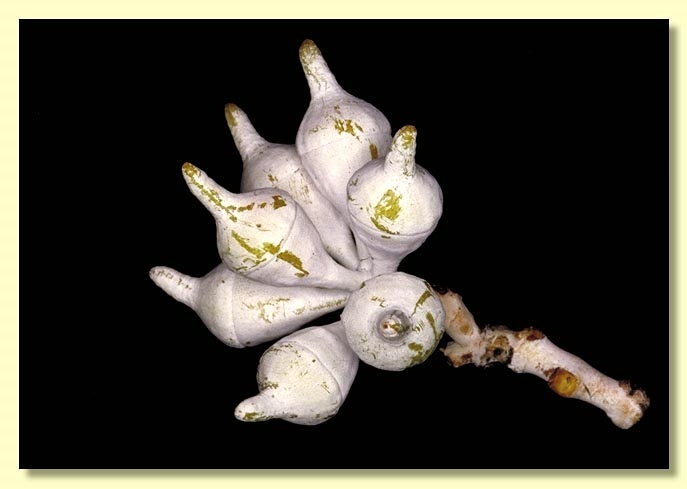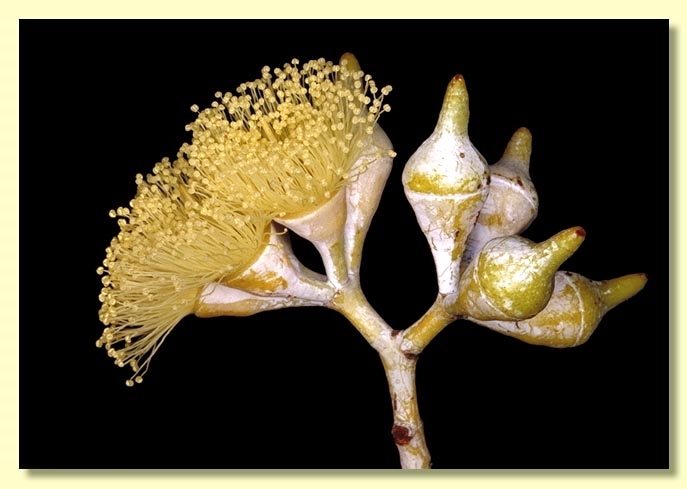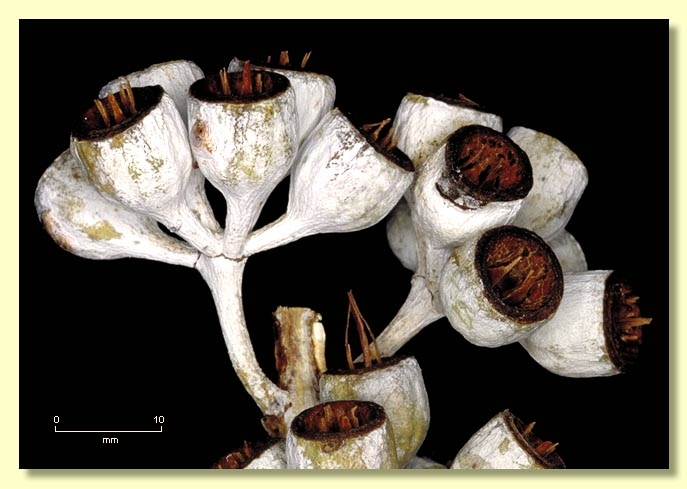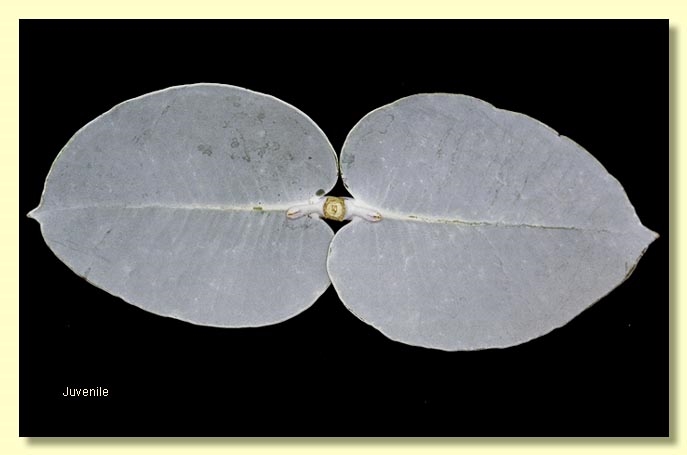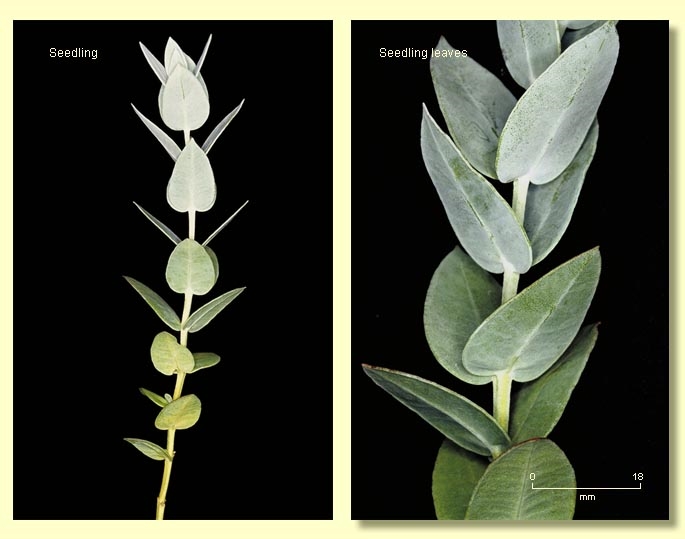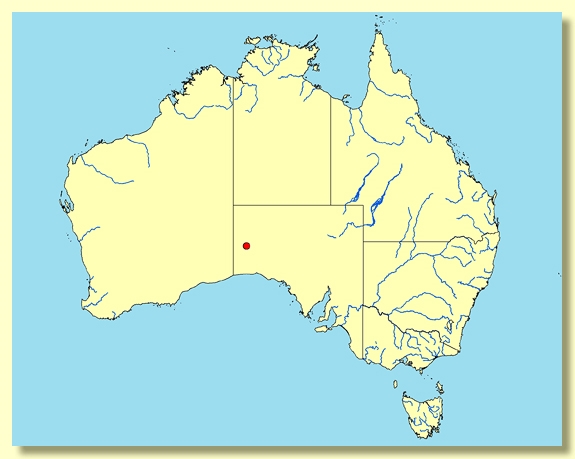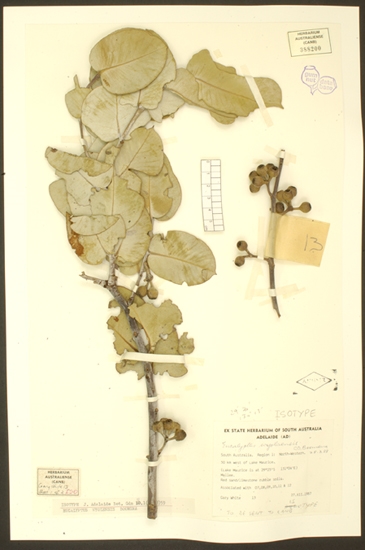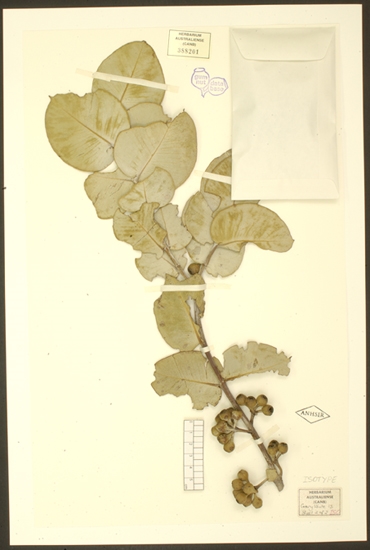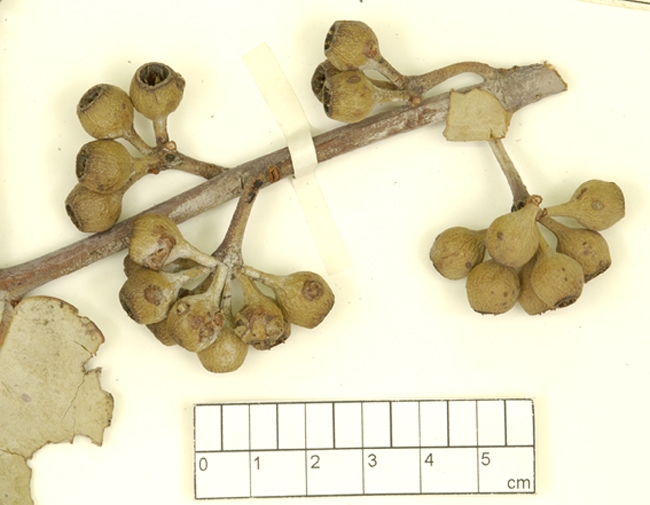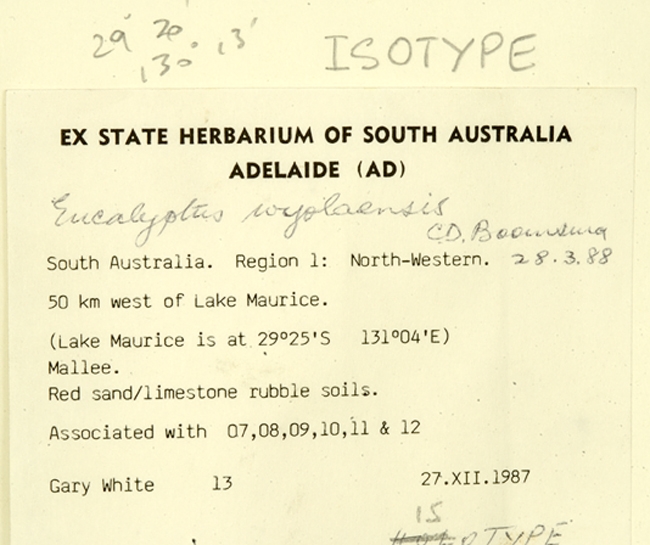Eucalyptus | Symphyomyrtus | Bisectae | Destitutae | Subulatae | Decussatae
Euclid - Online edition
Eucalyptus wyolensis
Bark usually rough over most of the lower stem, sometimes extending to the larger branches, fibrous, light grey to brown; upper stem mostly smooth-barked, smooth bark grey to brown to cream.
Juvenile growth (coppice or field seedlings to 50 cm): stems markedly glaucous and square in cross-section; juvenile leaves opposite and sessile, cordate, 5–10 cm long, 4–7 cm wide, glaucous.
Adult leaves in the mature crown similar to juvenile leaves, opposite, sessile, cordate to ovate, bases amplexicaul to rounded, 5–10 cm long, 3–6 cm wide, concolorous, glaucous, side-veins greater than 45° to midrib but venation often obscured by the white surface wax, moderately to densely reticulate, oil glands intersectional and island.
Inflorescence axillary unbranched, peduncles 0.8–1.5 cm long, buds 7, 9 or 11, pedicellate, pedicels 0.4–0.6 cm long. Mature buds ovoid (1.2–1.7 cm long, 0.6–0.8 cm wide), markedly glaucous, scar present, operculum beaked (c. 0.8 cm long), stamens irregularly flexed, anthers versatile, globoid, style long, stigma tapered, locules 3 or 4, the placentae each with 4 vertical ovule rows. Flowers yellow.
Fruit pedicellate, pedicels 0.3–0.6 cm long, cup-shaped to barrel-shaped, glaucous, 0.8–1.1 cm long, 0.8–1 cm wide, disc descending obliquely, valves 3 or 4, valve tips strongly exserted due to fragile style remnants.
Seeds brown, 2–3 mm long, ovoid or flattened-ovoid, occasionally with shallow longitudinal furrows on otherwise smooth dorsal surface, hilum ventral.
Cultivated seedlings (measured at node 10): cotyledons Y-shaped (bisected); stems square in cross-section, glaucous; leaves opposite, sessile, cordate to ovate, 2.5–5 cm long, 1.7–3.5 cm wide, glaucous.
Flowering has been recorded in July.
A straggly mallee known only from one small area in the Great Victoria Desert north of Cook, South Australia. (Cook is on the Transcontintental Railway Line.) The bark is rough on the lower half of the stems, the mature crown is very distinctive being composed of large, sessile, rounded grey juvenile leaves and the glaucous buds are beaked.
Eucalyptus wyolensis belongs in Eucalyptus subgenus Symphyomyrtus section Bisectae subsection Destitutae because buds have two opercula, cotyledons are Y-shaped and branchlets lack oil glands in the pith. Within this subsection E. wyolensis is part of a large taxonomic series (series Subulatae) further characterised by globoid basifixed anthers, grey smooth seeds with shallow longitudinal furrows, and fruit with persistent exserted style remnants. Series Subulatae is divided principally into four subseries based on the juvenile leaves, one with spiral, crowded seedling phyllotaxis (subseries Spirales), another with decussate and decurrent seedling leaves (subseries Decurrentes), another with decussate non-decurrent seedling leaves (subseries Decussatae), and a fourth with disjunct, petiolate seedling leaves (subserie Oleaginae).
Eucalyptus wyolensis is part of subseries Decussatae.
Because of its crown of juvenile leaves, E. wyolensis could only be confused with E. gillii, which occurs in the North Flinders Range of South Australia and from north of Broken Hill in New South Wales. E. gillii has smaller buds, leaves and fruits than E. wyolensis. Both have beautiful yellow flowers.
The juvenile crown also distinguishes E. wyolensis from E. vokesensis, which occurs in the Vokes Hill area of the Great Victoria Desert and has petiolate crown leaves which are dull blue-grey to glaucous. Another desert dwelling close relative of E. wyolensis , E. socialis subsp. victoriensis, which occurs in the southern fringes of the Great Victoria Desert from Forrest Lakes in Western Australian to the Gawler Ranges and north-western Eyre Peninsula in South Australia also differs in having a crown of petiolate adult leaves and buds only rarely glaucous.


